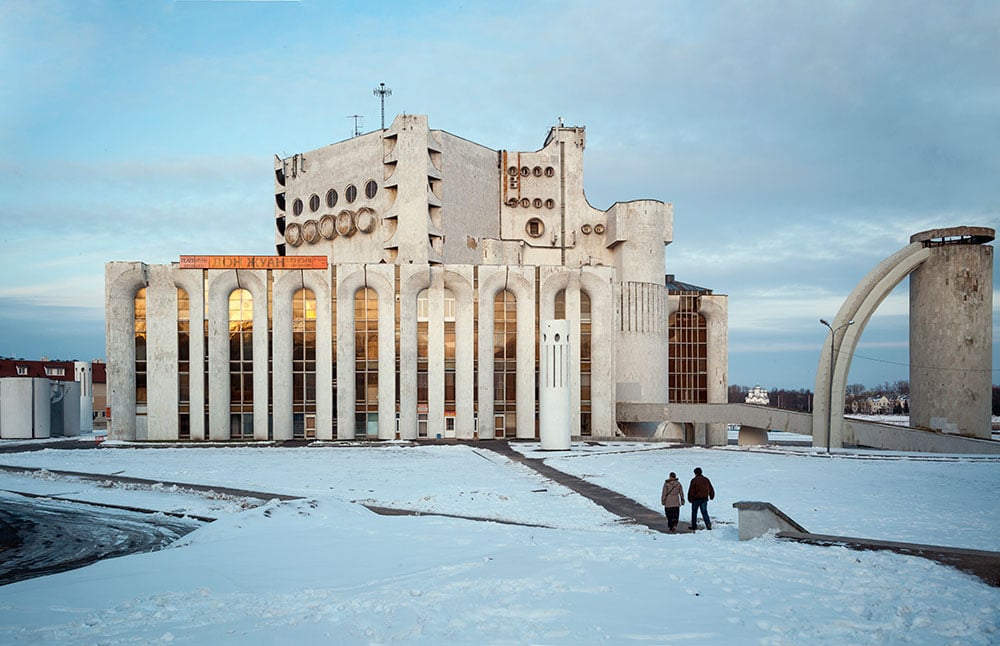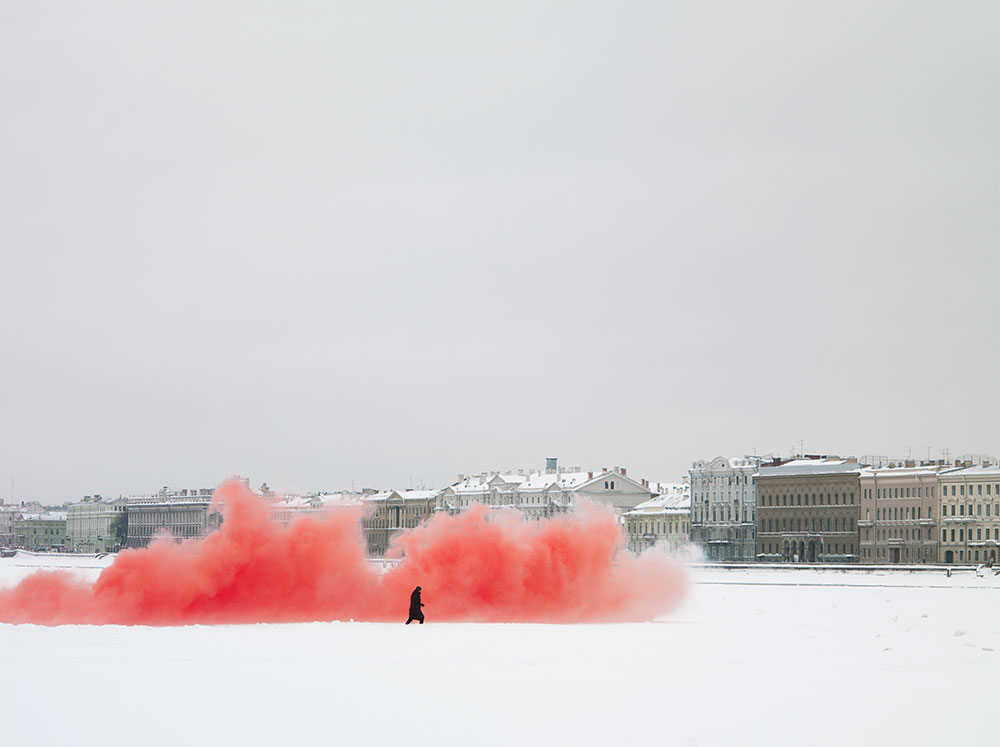Kyiv’s surreal modernist hotels, and why you need to visit them
If you’ve ever walked through the centre of Kyiv, you have definitely come across a seemingly dislocated white cylindrical building. Situated by the city’s key sites, like the Kyiv Pechersk Lavra church complex and the imposing statue of Mother Motherland, the round structure of Hotel Salute has become a symbol of Kyiv in its own right. Embodied in its futuristic structure is a vision of late Soviet modernism which can be traced throughout the cityscape of Kyiv — its aesthetic power, challenges and failures. Today, Salute still welcomes visitors, and, alongside other hotels from the era, it’s a monument to Kyiv’s thorny journey into global modernity.
Becoming a kitsch and surreal film set is the fate of these modernist superstructures
On the back of the door, like in many hotels, I find the fire evacuation plan. Except at Salute it seems to state the obvious: you exit the room and just go around in a circle until you reach a fire exit from any side. At first glance, it resembles a cartoon drawing of a hedgehog. The rest of the room is painted pistachio and decorated with embossed pattern wallpaper. The furniture is meant to look like real wood, but the wood is too light and the grain, too smooth. On the nightstand is a 90s-style LED alarm clock with luminous green numbers. The coffee cups on the desk are proudly emblazoned with “Salute” (“САЛЮТ”) in cornflower blue angular letters. The room expands from the door towards a large balcony. Resting your elbows on its textured surface — the iconic white ribs of the building — you can observe the lush green skyline of Kyiv, punctuated by golden onion domes and crosses. On a bright summer’s day, the view is enchanting.
It’s tempting to imagine what this view would have looked like from higher up, the height originally intended for the hotel. According to the design by architects Avraam Miletsky, N. Slogotskaya and Vladimir Shevchenko, Salute was supposed to be a skyscraper, but due to a conflict with the party leadership, the height was cut by more than a half. Completed in 1984, the seven-storey hotel stands on a solid foundation designed for a much taller construction. It has a hundred rooms, 90 standard ones and 10 larger suites. The shaky start meant that the hotel was not cost-effective even during its best years: the number of rooms (and their moderate size) didn’t generate enough profit. Yet Salute is still in business, with rooms starting at €50 a night.
Like many hotels which have outlasted their glory days, Salute feels stuck in time. The lobby, covered in narrow shiny panels, is always strangely dark, with a DHL counter glowing softly in the corner. Looking into the bar with its bright green snooker tables, you’re struck by a strange, confusing melancholy, comparable only to David Lynch’s films, where no one quite understands how they have ended up where they are. The restaurant could easily stand in for the Black Lodge: the carpet is a dark red, there is a grand piano in the corner, each table is draped with white and champagne-coloured table cloths and there are plants everywhere. Becoming a kitsch and surreal film set is the fate of these modernist superstructures — according to the owner’s taste and understanding of luxury, these are the qualities that make them more welcoming, more liveable.
They belong to the times when staying in a hotel was a luxury, not a necessity
There is a great deal of late modernist gems found in Kyiv: the concrete flying saucer that is The Institute of Information; The House of Furniture where the ceiling appears to be propped up by four poles; Memory Park with its sombre plasticity; as well as new buildings of the Taras Shevchenko University and the Vynogradar housing estate, to name just a few. Hotels from the same era share the same brutalist and, at times, imposing aesthetic.
The 17-storey block of Hotel Lybid was constructed in 1970. Its lobby is still recognisably 70s: the faux wood panels are reminiscent of the interior of an old Mercedes; there is a brightly-lit aquarium and an all-red bar. The palm trees and brown armchairs contrast starkly with the folk motifs that decorate the walls. The 21-storey Hotel Rus was built for the 1980 Olympics. Notably, it was home to Kyiv’s first bowling alley, a favourite pastime for posh youngsters. The concrete grid of this Kyiv hotel has nothing in common with what it looks on the inside: it was redone as an outpost of excessive luxury. Photography there is only allowed with special permission from the Ukrainian parliament. Hotel Ukraine, which dates to 1961, has witnessed numerous political shifts which started on the square over which it towers.
Since the days when Kyiv’s Soviet hotels first opened their doors, the idea of travelling and tourism in the country has shifted enormously. Before the fall of the Iron Curtain, hotels were for the party officials and the Soviet elite, and for rare international guests. Kyiv’s visitors today come for many reasons: some to explore Soviet history and architecture, some to explore an unconventional destination, some in search of affordable fun and the pleasures of the bourgeoning rave scene. The rise of Airbnb and hotel chains have hardly left any space on the market for the odd relic of late Soviet hospitality. Yet there is a case for taking a room in one of them: for the unique architecture, the desire for authenticity and history in the refurbished rooms, for the opulent flower arrangements and fans folded from napkins.
Bearing three stars at most, Kyiv’s Soviet hotels look like film sets because they represent the idea of a hotel which is now long gone. They belong to the times when staying in a hotel was a luxury, not a necessity; the pre-globalisation era of glamorous smoking and bars bathed in red lights. Today the setting sun reflected in the glass of Hotel Lybid hints at nostalgic romanticism, the same nostalgic romanticism that exists in the underpasses filled with flower vendors — the true spirit of contemporary Kyiv, for those willing to look for it.
Text: Anastasiia Fedorova
Image: Mishka Bochkarev
.jpg)
.jpg)
-crpd.jpg)
-crpd.jpg)
-crpd.jpg)
.jpg)

.jpg)
.jpg)
_1.jpg)
crpd.jpg)
crpd.jpg)
.jpg)
.jpg)
.jpg)
.jpg)
.jpg)
.jpg)
.jpg)
.jpg)
